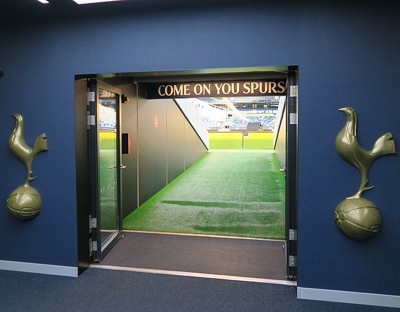
Top-class football stadiums all have a tunnel that leads from the dressing room to the pitch.
The players need to traverse this tunnel before a game, so it makes sense for the home team to do what they can to make it an intimidating place to play. It is one of the few advantages that the home side has available to them to psyche out the opposition, apart from the presence of the home crowd in the stands.
However, some tunnels are more notorious than others.
There are some very famous football stadium tunnels, with the ‘This Is Anfield’ sign that stands above the entrance to the pitch area at the home of Liverpool Football Club being one of the best-known sights in the game.
What other stories are out there about teams that use their tunnel to their advantage? Is it just about intimidating the opposition and hoping to get into their heads before a ball has even been kicked?
Anfield
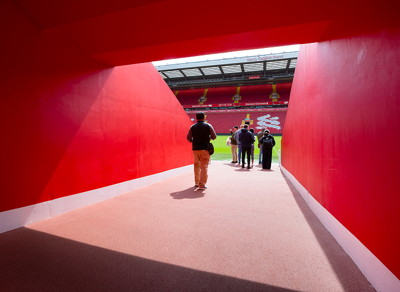 Let’s start by looking at that famous sign at Anfield, the home of Liverpool Football Club. Opposition fans might sneer at the very notion of it being on this list, just as they scoff at the idea of an ‘intimidating Anfield atmosphere’, yet the truth of the matter is there in the number of teams that have turned up at the Merseyside ground and lost there. Whether it be Borussia Monchengladbach in 1973, Chelsea in 2005 or Barcelona in 2019, there’s something undeniable about the power of Anfield.
Let’s start by looking at that famous sign at Anfield, the home of Liverpool Football Club. Opposition fans might sneer at the very notion of it being on this list, just as they scoff at the idea of an ‘intimidating Anfield atmosphere’, yet the truth of the matter is there in the number of teams that have turned up at the Merseyside ground and lost there. Whether it be Borussia Monchengladbach in 1973, Chelsea in 2005 or Barcelona in 2019, there’s something undeniable about the power of Anfield.
That all starts when players line up in the tunnel, ready to head onto the pitch and see the sign in front of them that reads ‘This Is Anfield’. Bill Shankly, the famous manager who founded the modern version of Liverpool, once said that the sign ‘is there to remind our lads who they’re playing for, and to remind the opposition who they’re playing against’. It wasn’t Shankly’s idea, instead coming from a groundsman who suggested it said ‘Welcome To Anfield’.
It was the Scot who perfected it, however. He said, “We’re not having that, you’re not here to have a good time, you’re not here to have a nice day, let’s have This Is Anfield.” When Jürgen Klopp turned up at the club he said, “I’ve told my players not to touch the ‘This Is Anfield’ sign until they win something. It’s a sign of respect.” When they won the European Cup and Premier League in successive seasons, they’d very much earned the right to touch it.
I Don’t Know What It is But I Love It
As an aside, it’s worth asking whether Liverpool’s players took inspiration from their home tunnel when they played AS Roma in their home stadium of the Stadio Olimpico in Rome. It was the final of the European Cup in 1984, making it the fourth time that the Merseyside club had played in that stage of the competition in seven years. As the players emerged from the away dressing room, substitute David Hodgson began signing a Chris Rhea song.
By the time they were walking past Roma’s dressing room, where the manager was giving his team their final instructions, most of the Liverpool squad had joined in. They sang it so loudly that it drowned out the Roma fans in the stadium, nullifying their ability to intimidate the Liverpool players. It had the reverse effect on Roma’s players, psyching them out ahead of kick-off. “I Don’t Know What It Is But I Love It” helped The Reds add another European Cup to their trophy cabinet.
Rajko Mitić Stadium
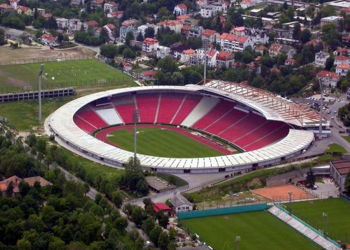
If the ‘This Is Anfield’ sign is designed to remind opposition players of where they are in the hope that the club’s history alone will intimidate them, Red Star Belgrade’s tunnel at the Rajko Mitić Stadium takes a much more literal approach.
The Serbian side’s tunnel is something more akin to an underpass that takes you beneath a road in an Eastern European city than a tunnel you’d expect to find in a modern football stadium.
Not only is the side of the tunnel covered in intimidating artwork that appears to threaten you for even standing there, but the tunnel itself is typically lined with armed police.
It would be entirely understandable for opposition players to want to rush out of the tunnel onto the pitch, but there are usually tens of thousands of Red Star fans singing, screaming and baying for blood at the end of the tunnel, making most players think twice.
Veltins Arena
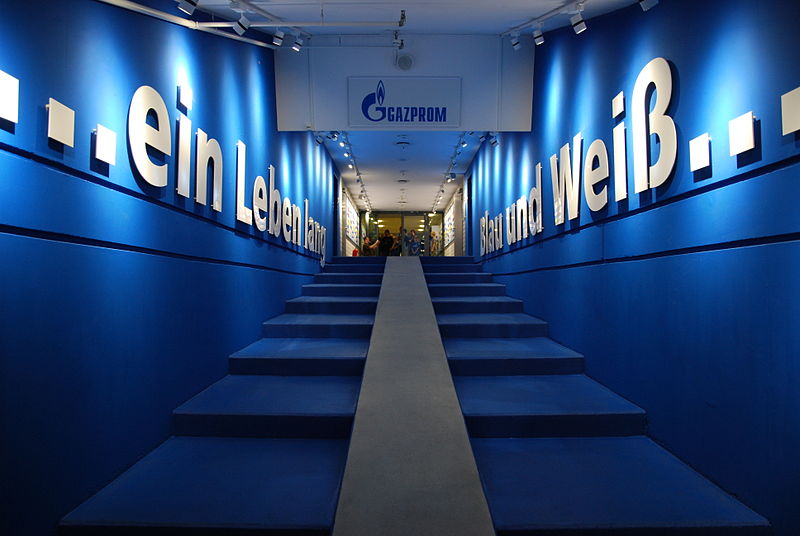
FC Shalke might not be one of the most terrifying team names to emerge from Germany, but the tunnel that they have for both sets of players to walk down is unsettling to say the least.
Gelsenkirchen, the city that Shalke calls home, is heavily influenced by mining, so the club redesigned their tunnel to look like the entrance to a coal mine. Coal mining, it’s fair to say, is a job that not many footballers would have opted for if given the choice.
The faux-rock walls and overly-dramatic lighting in the tunnel means that players will feel a little bit as if they’re being swallowed up by the earth itself as they make their way towards the pitch.
It’s a nod to the local mining community, yes, but it also does a job of letting visiting teams know that they’re going to have to dig deep if they want to emerge from the Veltins Arena with a win under their belts.
Selhurst Park
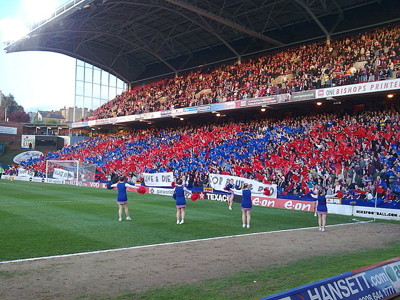
It might be a surprise to see the home of Crystal Palace on this list, especially considering the fact that the Eagles aren’t exactly one of the country’s most successful football clubs.
Nevertheless, the tunnel at Selhurst Park that players have to walk down in order to make it onto the pitch is very much deserving of its place on our list thanks to the fact that it is so narrow that players have to walk single-line in order to get out of it.
It’s one of the smallest grounds in the Premier League, but Palace fans aren’t shy and are known to create a decent atmosphere when the occasion calls for one. They will scream and shout and make a bloody racket, with supporters close to the edge of the entrance to the tunnel to give it that little bit more of an intimidation factor.
No, it’s not likely to make the footballers break down and cry, but it might just put a wobble in their legs ahead of kick-off.
Estadio Alberto J. Armando
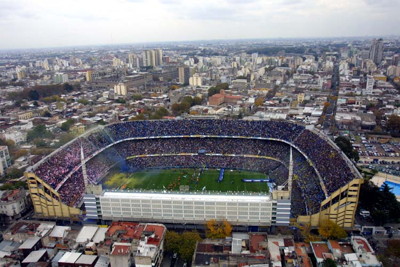
Ok, so it’s slightly misleading to have this stadium on a list specifically about tunnels, but La Bombonera in Buenos Aires is known to sake from the noise generated by the Boca Junior fans inside the ground.
Imagine standing in a stadium’s tunnel before kick off and the supporters that are outside are that vociferous in their shouts and calls for their team that the walls either side of your literally start to move.
Hernan Crespo, who would later go on to play for Chelsea, used to play for Boca’s fiercest rivals River Plate. He once said, “I remember when I was 18, I was on the court and I thought they were my legs that were shaking and no, it was people, it’s very strong, it’s not easy.”
Crespo later tried to clarify that he was saying it was shaking because it’s badly built, but whatever the reason it’s not a tunnel many footballers would like to stand in.
Millerntor-Stadion
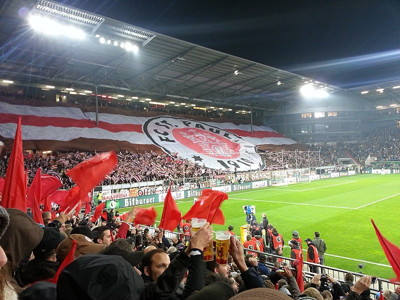
Some clubs have naturally intimidating stadiums, whilst others choose to make changes to their ground’s design in order to add an aspect of intimidation.
That is very much the bracket that St. Pauli fall into, having resonated their players’ tunnel so as to make it a less welcoming spectacle. The German team installed red lighting to combine with the skull & crossbones that make up its club crest.
Imagine waiting to play a game of football and being greeted by a blaring red skull. You’d probably think about packing it all and becoming a fisherman or something.
The fact that the players need to walk towards the skull and crossbones in order to make it onto the pitch, so it’s not even as if they can just ignore it. Maybe they’ll sing sea shanties to try to make themselves feel better. Weigh hey and up she rises….
